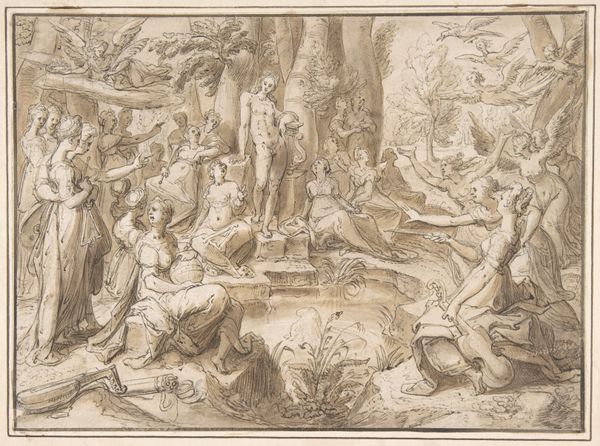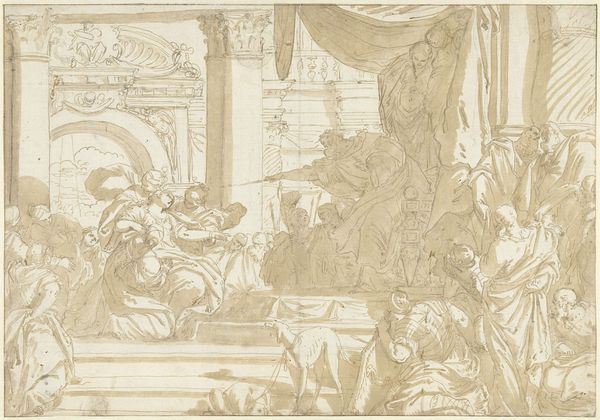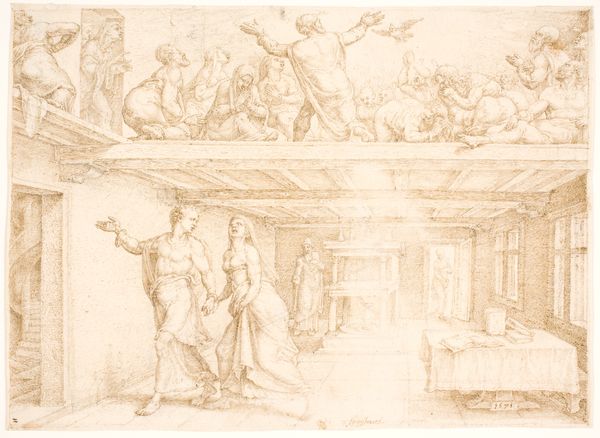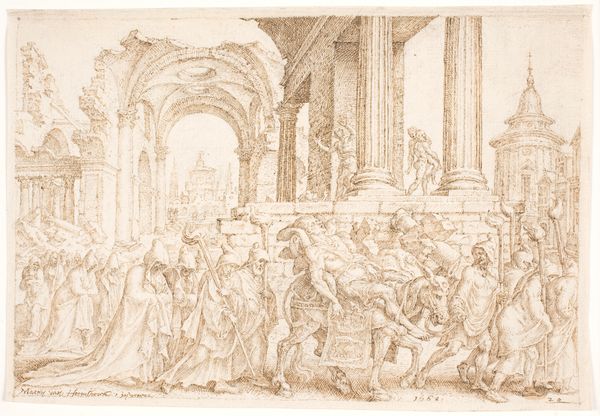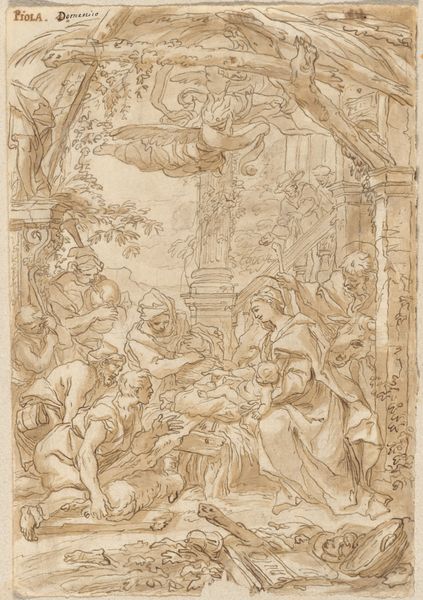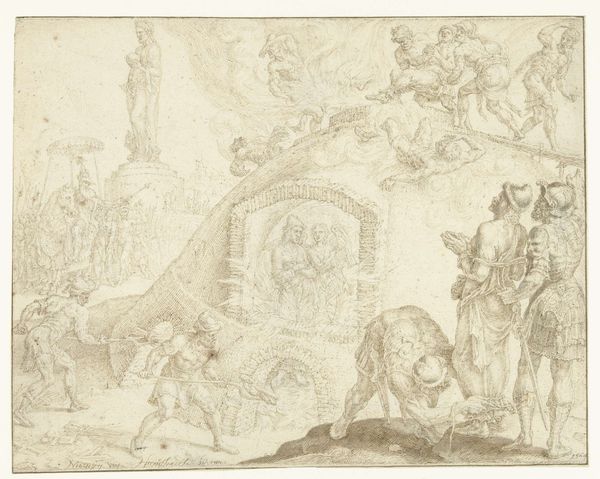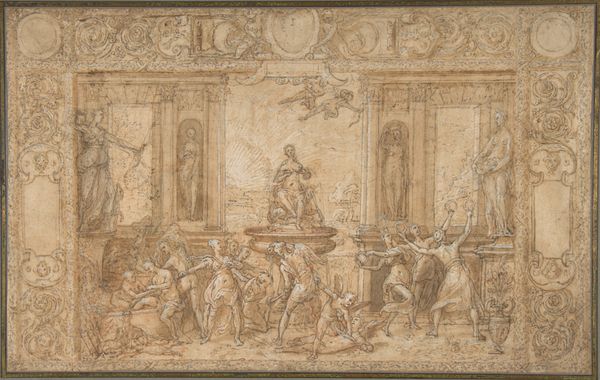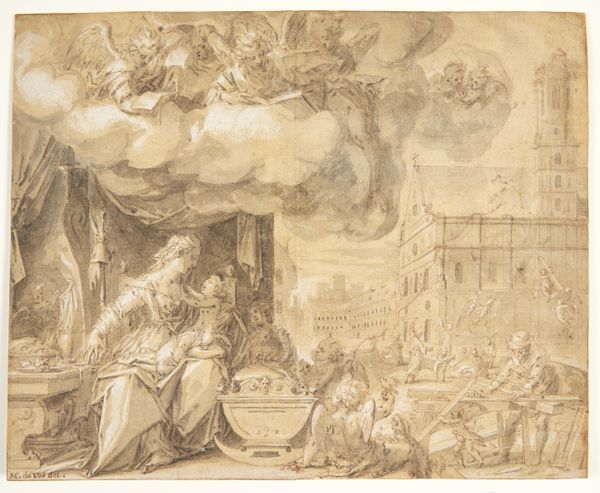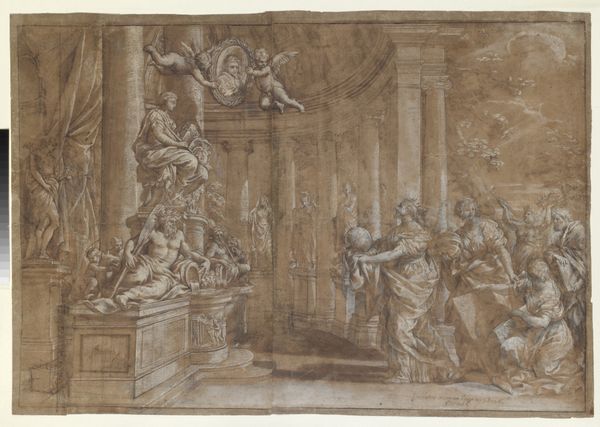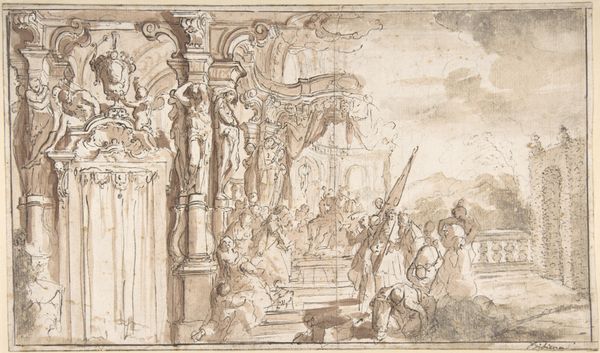
Phaeton asks his Father Phoebus for the Sun’s Chariot c. 17th century
0:00
0:00
drawing, ink, pen
#
drawing
#
allegory
#
narrative-art
#
baroque
#
charcoal drawing
#
figuration
#
ink
#
pen
#
history-painting
Dimensions: 6 7/8 x 8 5/8 in. (17.46 x 21.91 cm)
Copyright: Public Domain
Editor: This pen and ink drawing, "Phaeton asks his Father Phoebus for the Sun’s Chariot" by Bernard Picart, dates back to the 17th century. I’m immediately struck by its theatricality, almost like a stage set. All the figures seem to be caught in a dramatic moment. How do you interpret this work, especially considering its historical context? Curator: It’s important to remember that art of the 17th century was deeply intertwined with power, status, and public spectacle. This drawing exemplifies that. Consider the central figures: Phoebus, the sun god, enthroned and surrounded by attendants, represents divine authority. And Phaeton's impassioned plea reveals the ambition inherent within humanity. Editor: So, it's less a private moment and more of a public declaration? Curator: Precisely. Drawings like this were often preparatory sketches for larger works, destined for public display whether as prints or as components for even larger visual spectacles. Consider the architecture itself - the colonnade emphasizes power of Phoebus as does his literal seat on a throne elevated from his subjects. Even the medium, pen and ink, allows for a clarity and precision of line meant for the masses and wide reproduction. How might an audience receive such imagery during a time marked by strict social hierarchies? Editor: It sounds like the artist might be telling people about order in the universe…and who’s in charge of it! That wasn’t so obvious to me, but now I see the whole scene is designed for impact, down to the choice of media and even architectural forms. Curator: Absolutely. Picart used the mythology not simply for art's sake, but to underscore power structures prevalent in his own time and place, asking how mythology and art played in legitimizing social order. Editor: It’s fascinating to consider how this drawing functions as a historical record. It’s given me so much to think about, beyond just the surface aesthetics! Curator: Indeed. It reminds us that even seemingly straightforward mythological scenes often reflect and reinforce the social and political realities of their time.
Comments
No comments
Be the first to comment and join the conversation on the ultimate creative platform.
